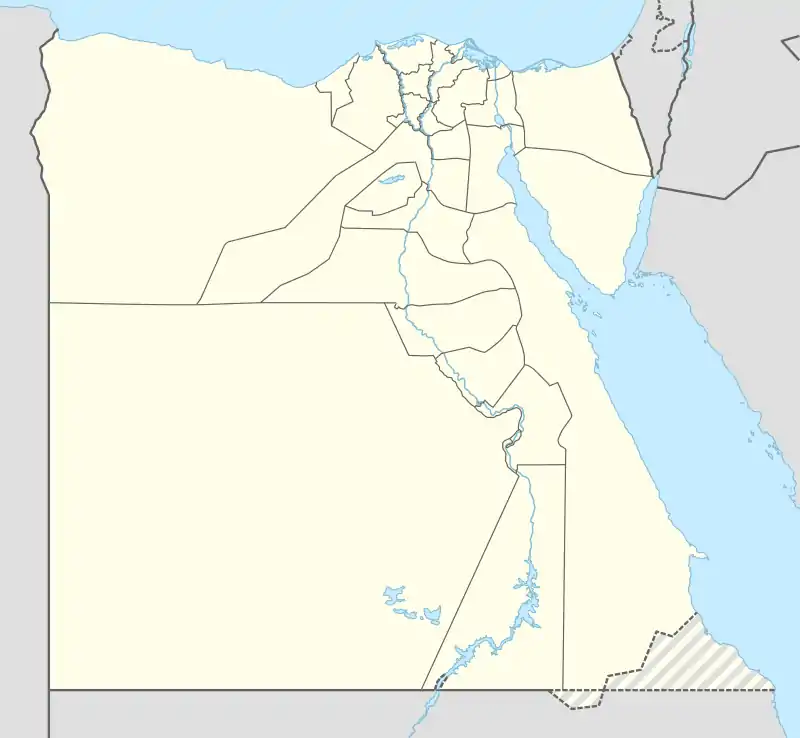Lepidotonpolis
Lepidotonpolis (Ancient Greek: Λεπιδότων πόλις) is the Greek name of an ancient Egyptian town in Upper Egypt under the modern village Nag' El Mashayikh opposite to modern Girga. The ancient Egyptian name of the place was perhaps Behedet jabtet - or Per mehit according to Gauthier.[1] Under the modern village are the remains of a New Kingdom temple. Fragments with the names of the Egyptian kings Amenophis III, Ramesses II, and Merneptah were found.[2] The main deity of the place was the lion goddess Mehit. The lepidotus fish was here worshiped too. Near the temple is an ancient cemetery including the decorated rock cut tomb of Anhurmose[3] and the tomb of the royal scribe Imiseba.
Nag' el-Mashayekh
نجع المشايخ | |
|---|---|
 Nag' el-Mashayekh Location in Egypt | |
| Coordinates: 26°20′20″N 31°56′18″E | |
| Country | |
| Governorate | Sohag |
| Time zone | UTC+2 (EST) |
| pr mḥjt[1] in hieroglyphs | ||||
|---|---|---|---|---|
| Era: 2nd Intermediate Period (1650–1550 BC) | ||||
References
- Gauthier, Henri (1925). Dictionnaire des Noms Géographiques Contenus dans les Textes Hiéroglyphiques Vol. 2. p. 88.
- B. Porter and R.L.B. Moss: Topographical Bibliography of Ancient Egyptian Hieroglyphic Texts, Reliefs, and Paintings, V. Upper Egypt: Sites, Oxford, 1937, p. 29
- Lepidotonpolis
This article is issued from Wikipedia. The text is licensed under Creative Commons - Attribution - Sharealike. Additional terms may apply for the media files.